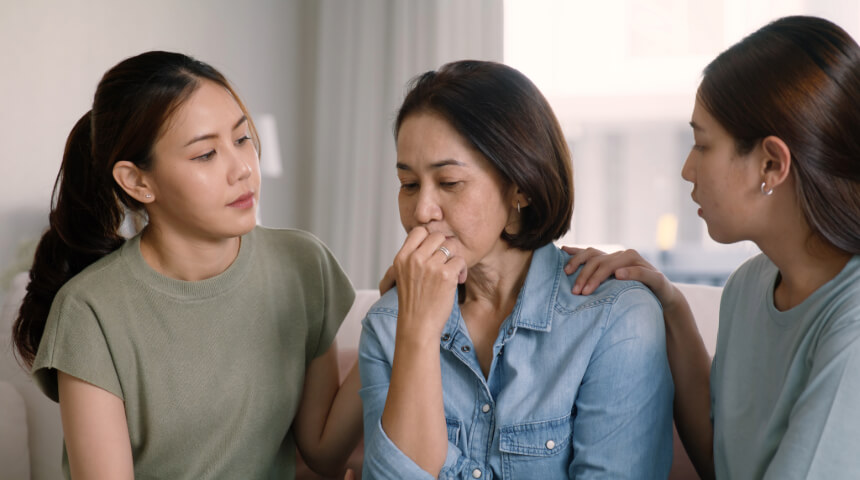Most of us have suffered from back pain -- from a twinge to an ache to something more serious. Everyday actions, like sitting for long periods, improperly lifting heavy objects or overdoing it during a workout, are usually to blame.
Here's why back pain occurs, how to treat it at home and when to see your doctor.
Common Causes of Back Pain
Back pain may stem from nerve or muscle-related issues. Some of these include:
-
Muscle strain. Bending awkwardly or lifting heavy objects can cause tension, strain or injury. This includes strained muscles or ligaments, muscle tension, injuries, fractures and falls.
-
Bulging or ruptured discs. The vertebrae in the spine are cushioned by discs. If these discs rupture or bulge, it puts pressure on the nerves in the spine, causing back pain.
-
Sciatica. When a herniated disc presses on a nerve, it causes sharp, shooting pain that travels from the back, down the glutes — usually on one side — and down the back of the leg.
-
Abnormal spine curvature. One of the common types of spine curvatures is scoliosis, which is when the spine curves to the side.
-
Osteoarthritis. Arthritis can decrease the flexibility of the spine, including the ability to stretch your back. It also causes stiffness, pain and swelling throughout the skeletal system.
-
Pinched nerves usually happen when surrounding tissue compresses nerves in your spine. This causes pain, numbness and tingling.
5 Ways To Prevent Back Pain
-
Improve your posture. When standing or walking, keep your head in line with your body. Keep your core and abdomen muscles engaged, your feet shoulder-width apart and don’t lock your knees. Distribute your weight evenly on the balls of your feet. When you’re sitting, adjust the height of your chair so your feet are resting flat on the floor. Don't sit for long periods. Walk around every half-hour and change position regularly.
-
Quit smoking. Nicotine can restrict the blood flow to the discs in the spine, making smokers more prone to back pain. Smoking also reduces the amount of oxygen in the blood, which is essential for healthy muscles and tendons.
-
Learn proper lifting. Heavy or improper lifting can cause back pain, so be mindful when lifting and carrying objects. If you must carry a heavy item, ask someone to help you lift it. When carrying something alone, take some weight off your shoulders and upper back by shifting the weight from shoulder to shoulder. Use a cart or bag with wheels to transport heavy loads like groceries and boxes.
-
Get moving. Strength training, particularly core exercises like planks, can reduce your risk of back-related injuries such as sprains and strains. Pilates, swimming and stretching are good options to strengthen the spine.
-
Watch your weight. Carrying too much weight can strain your back. Besides regularly exercising for 30 minutes a day, follow a balanced diet to maintain a healthy weight. Talk to your doctor for guidance.
Home Remedies for Back Pain
Sometimes, easing an achy back is as simple as doing some gentle stretches. Try these home remedies to ease the pain:
-
Take a warm bath to relieve muscle pain or swim in a warm pool to stretch and soothe your muscles.
-
Use heat patches or a warm wet cloth to treat achy or stiff muscles.
-
Apply an ice pack or a bag of frozen vegetables to a sprain or injury.
-
Use over-the-counter ointments and anti-inflammatories to ease pain and inflammation.
-
Do light stretching exercises such as yoga.
When To See a Doctor
Back pain usually eases in time with rest and treatment, but if you experience ongoing severe back pain accompanied by numbness or tingling, see your doctor immediately.
Your back pain could be a symptom of a chronic condition, so in addition to a medical exam, your doctor may perform diagnostic tests such as an MRI.
Choose to Stay in Touch
Sign up to receive the latest health news and trends, wellness & prevention tips, and much more from Orlando Health.
Sign Up










